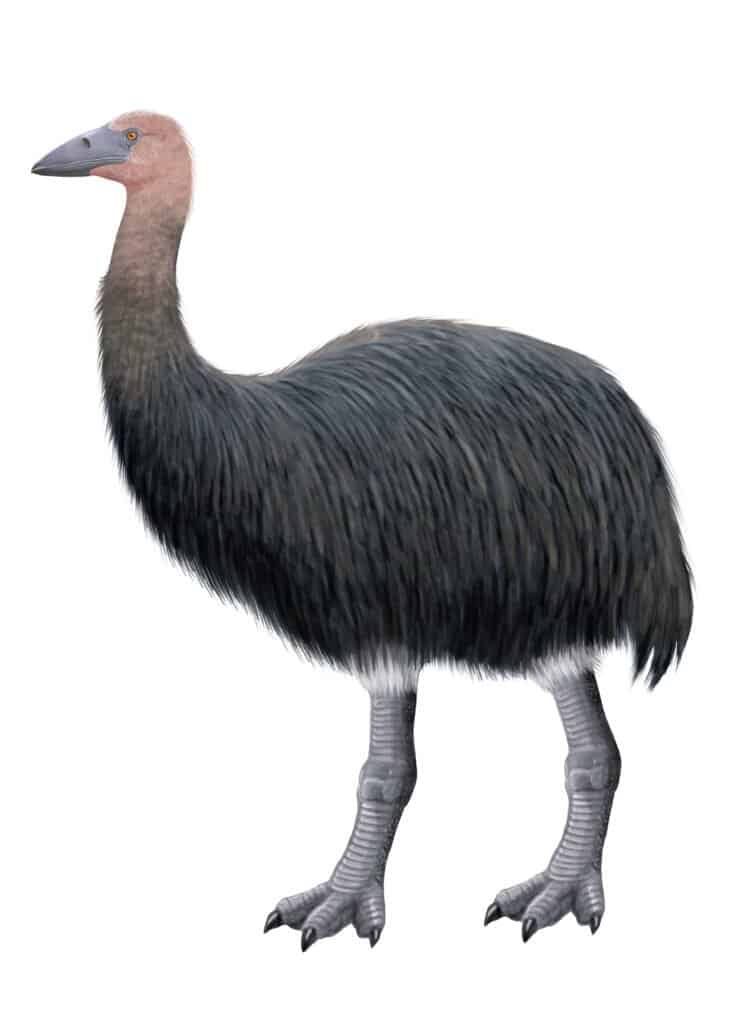Cassowaries are giant birds native to Australia, New Guinea, and Indonesia. Their unique appearance has led to significant attention. Cassowaries have giant feet with razor sharp claws, crests on their heads called “casques,” and can reach epic proportions relative to other bird species!
Yet, you might be wondering whether cassowaries are the largest birds in the world, what size they can reach, and how big the largest cassowary on record reached.
We’ll dig into all the details and more below!
Cassowary Size: How Tall Do They Get & How Much Do They Weight?

A cassowary standing against a black background
©Sardo Michael/Shutterstock.com
Cassowaries belong to the clade Palaeognathae, which includes mostly flightless birds like ostriches. If it strikes you that large, flightless birds are rare, you’re absolutely correct! Overall less than 1% of birds belong to this rare collection of flightless species.
Cassowaries can reach sizes that are almost unrivaled among other bird species. The largest cassowary species are the southern & northern cassowary which reach similar heights. Females are larger than males, with female southern cassowaries reaching up to 5 feet 9 inches. They weight an average of about 128 pounds (58 kilograms).
Another species of cassowaries is the dwarf cassowary. It lives further inland in the mountains and doesn’t reach the same size as its southern and northern neighbors. Dwarf cassowaries reach a maximum weight of about 57 pounds.
What was the largest cassowary ever recorded?

Southern Cassowary walking along the beach.
©Kensho Photographic/Shutterstock.com
The largest cassowaries are believed to reach about 170 pounds! Cassowaries live in dense forest habitats in isolated areas. This leads to surprisingly little being known about the species. This size puts southern cassowaries close to being the largest bird in the world today, but one type of bird tips the scales at even higher weights.
Commonly, the largest cassowaries can stand as high as six feet tall and weigh up to a usual 160 pounds. These huge birds can’t fly, however, their long powerful legs can propel them forward at high speeds similar emus. An average cassowary stands about five foot eight and females tend to weigh about 120 pounds.
How Does the Cassowary Compare to Extinct Birds like the Elephant Bird and Moa?

Elephant
birds reached 1,600 pounds, about five times the size of ostriches today!
©Nicolas Primola/Shutterstock.com
While cassowaries are extremely large, they’ll have to settle for “runner up” status. The largest bird in the world is the common ostrich which reaches weighs up to 320 pounds.
(Another ostrich species – the Somali ostrich – was recently identified as a new species in 2014, which could push the cassowary down to third place in some standings.)
In the not so distant past, the cassowary would have had more competition. The elephant bird lived on Madagascar and reached up to 1,600 pounds, or about five times the size of the largest ostriches! Believe it or not, but these gigantic birds only went extinct about 1,000 years ago due to human hunting.
Another large flightless bird was the moa, which suffered a similar fate. Human settlers first arrived in New Zealand in about 1300 and fossil evidence shows they were extinct only about 100 years later. Moas were believed to have weighed over 500 pounds, making them about four times the size of an average female southern cassowary.
Next Up…
- Cassowary Attack: Are Cassowaries Dangerous to Humans? – Do Cassowaries attack people? Click here to learn all about it!
- Is a Cassowary A Bird? – Are cassowary birds or dinosaurs? Keep reading to find out!
- 10 Incredible Cassowary Facts – Find out some amazing facts about this interesting, ancient creatures!
The photo featured at the top of this post is © Sardo Michael/Shutterstock.com
Thank you for reading! Have some feedback for us? Contact the AZ Animals editorial team.






